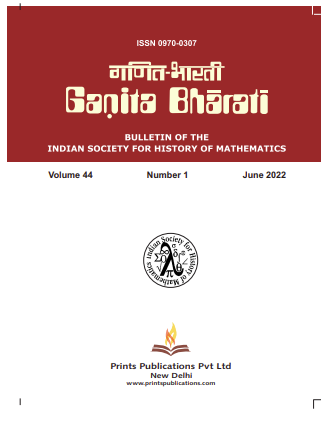Ganita Bharati
Published in Association with Bulletin of The Indian Society for History of Mathematics
Current Volume: 45 (2023 )
ISSN: 0970-0307
Periodicity: Half-Yearly
Month(s) of Publication: June & December
Subject: Mathematics
DOI: https://doi.org/10.32381/GB
Online Access is Free for Life Member
Marinus–Ptolemy and Delisle–Euler Conical Maps
By : Hideki Miyachi, Kenichi Ohshika, Athanase Papadopoulos
Page No: 227-251
Abstract
We examine connections between the mathematics behind methods of drawing geographical maps due, on the one hand to Marinos and Ptolemy (1st-2nd c. CE) and on the other hand to Delisle and Euler (18th century). A recent work by the first two authors of this article shows that methods of Delisle and Euler for drawing geographical maps, which are improvements of methods of Marinos and Ptolemy, are the best among a collection of geographical maps we term “conical”. This is an instance where after practitioners and craftsmen (here, geographers) have used a certain tool during several centuries, mathematicians prove that this tool is indeed optimal. Many connections among geography, astronomy and geometry are highlighted. The fact that the Marinos–Ptolemy and the Delisle–Euler methods of drawing geographical maps share many non-trivial properties is an important instance of historical continuity in mathematics.
Authors
Hideki Miyachi School of Mathematics and Physics, College of Science and Engineering, Kanazawa University, Kakumamachi, Kanazawa, Ishikawa, 920-1192, Japan
Kenichi Ohshika Department of Mathematics, Gakushuin University, Mejiro, Toshimaku, Tokyo, Japan.
Athanase Papadopoulos Institute de Recherche Mathématique Avancée (Université de Strasbourg et CNRS), 7 rue Rene, Descartes, 67084.
nterdisciplinaty Mathematical Sciences, Institute of Science, Banaras Hindu University, Varanasi-221005, India.
DOI: DOI-https://doi.org/10.32381/GB.2023.45.2.3




